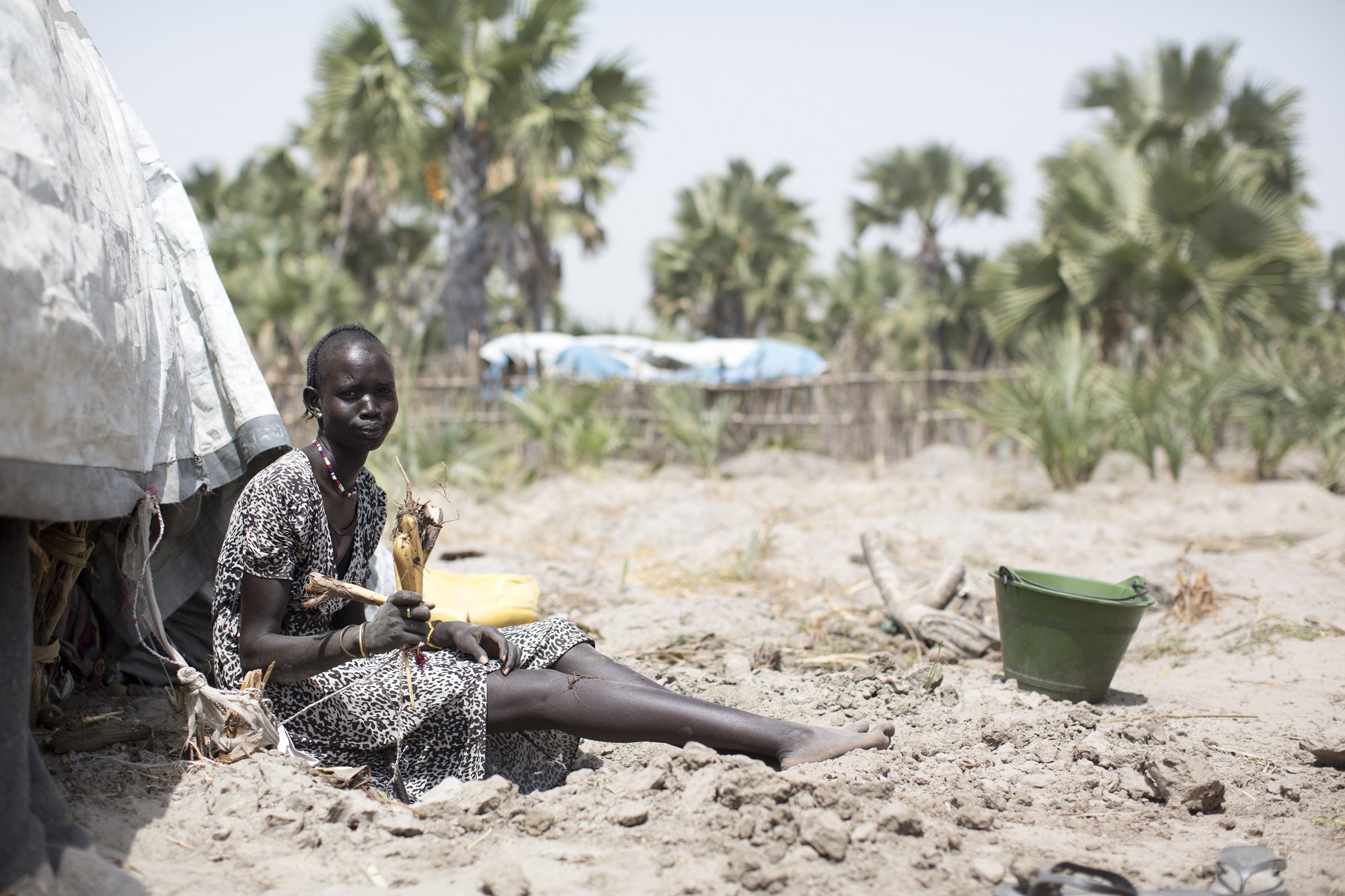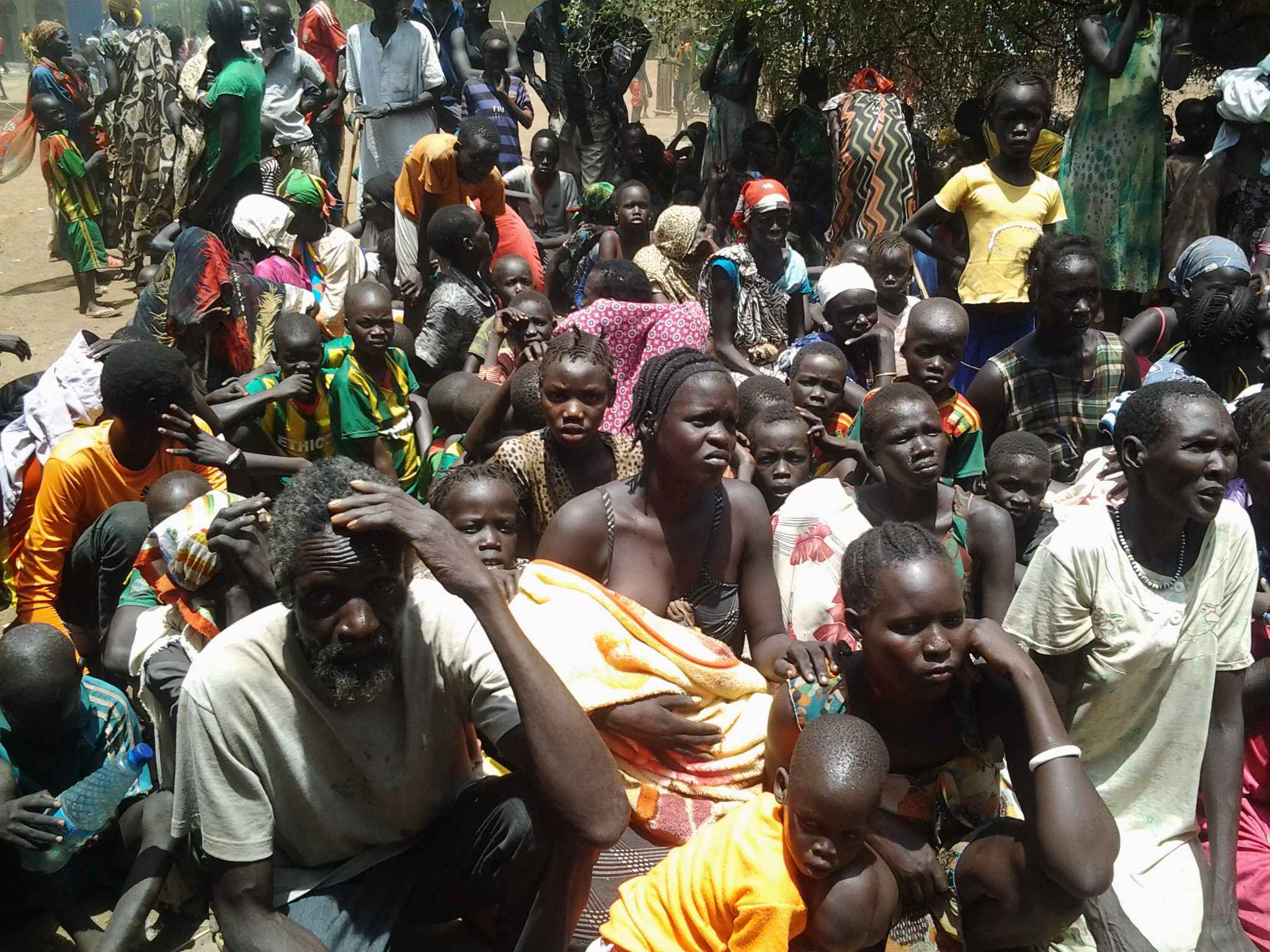UNHCR prepares for refugee influx into South Sudan's Upper Nile state
UNHCR prepares for refugee influx into South Sudan's Upper Nile state

MABAN COUNTY, South Sudan, November 8 (UNHCR) - Aneim has just reached South Sudan's newest refugee camp, Gendrassa, after fleeing a devastating mid-October air attack on his village across the border in Sudan's Blue Nile state.
For UNHCR, the arrival of the livestock farmer and his extended family of 11 people was a further sign that floodwaters are receding and people are once again making the journey to safety in South Sudan's Upper Nile state following attacks on their villages. The refugee agency is, accordingly, taking preemptive measures to cope with a likely accelerated influx.
In the last week of October, UNHCR staff registered 72 new arrivals in Gendrassa, mostly women and children. Although small, this was the highest weekly arrival figure since the rainy season began in May and indicated that the numbers were starting to rise with the changing weather pattern. Before, the flooding was simply too deep to cross, but the most desperate are now chancing their luck as the waters start falling.
Mireille Girard, UNHCR's representative in South Sudan, said that many more refugees were likely to cross the border if fighting between the Sudanese armed forces and the Sudan People's Liberation Army-North escalated during the coming dry season, which begins in mid-November. Food shortages would also be a push factor.
She said that UNHCR had started preparing a contingency plan to meet the most pressing needs of up to 30,000 new refugee arrivals in Maban County between now and the end of the year. It covers key areas such as shelter, health care, food rations and non-food items such as plastic sheeting, blankets, sleeping mats, hygiene sets and kitchen items.
UNHCR currently works in four refugee camps in Upper Nile state's Maban County, including Gendrassa, which hosts some 14,300 refugees and is the only one that has not yet reached full capacity. It has room for another 5,000 refugees. Girard said the refugee agency was in negotiations with the local authorities to open new transit centres and camps in other counties.
The only potential new camp site under consideration in Maban County is located at a 400-hectare site and could host between 20,000 and 30,000 refugees. Other locations under consideration, all outside Maban, are Melut, Beneshowa and Longichok.
Unlike the other camps in Maban, the proposed new site sits on a base of pebbles, soil and clay, which makes it easier to instal drainage systems for washing areas and latrines. It is also in an area of shrubs, grassland and trees that can be used for construction and firewood, but this needs to be carefully managed to avoid friction with host communities and to protect natural resources and the environment.
Harmony is vital and UNHCR and other aid groups have established forums where refugees and host communities are being engaged in initiatives to avert or resolve differences over land, resources and even the livestock that refugees bring with them and which graze on community land. Locals in this very remote and undeveloped area of South Sudan have been told that they will be able to access facilities in the new camp such as schools and health centres and possibly find employment.
If given the go ahead, UNHCR experts will search for underground water sources. In addition, water will be trucked to the proposed new site from a well situated 12 kilometres away from Gendrassa.
UNHCR has, meanwhile, stepped up border monitoring activities at several entry points. In the contingency planning, new transit centres may be established near border entry points. People will stay at these sites until they can be transported on to a camp.
The refugee agency has also embarked on an exercise to clear the backlog of people waiting to be registered as refugees. This will allow UNHCR's registration and protection staff to devote their time to any major new influx in the coming months.
A key UNHCR partner, the World Food Programme, is also preparing for the future. WFP has pre-positioned food for 15,000 new arrivals in Jamam camp, which is scheduled to become a transit centre. Extra stocks of corn soya blend have been pre-positioned to meet the nutritional requirements of infants and young children with moderate to acute malnutrition.
The farmer Aneim believes UNHCR is doing the right thing, predicting that refugees will soon start streaming across the border into Maban County from their hiding places in the mountains and forests of Blue Nile state.
"They are suffering terribly. But here they will sleep the night without worrying about exploding bombs," he asserted. "Even if you have lost everything - as I have - this camp has given me the opportunity and the confidence to begin my life again."
By Pumla Rulashe in Maban, South Sudan








